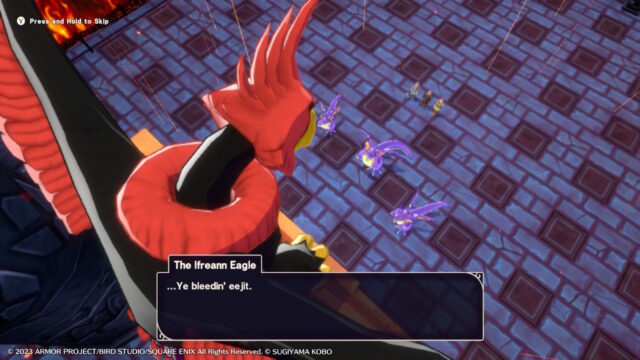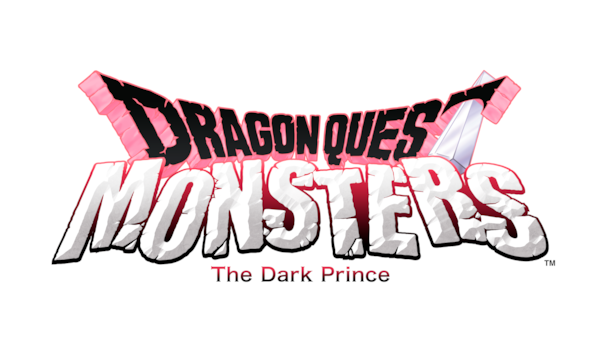Dragon Quest Monsters: The Dark Prince Review
Exploring the Secret of Evolution
In a surprising announcement during a Nintendo Direct last June, Dragon Quest fans were treated to a surprise mention of the return of the Monsters subseries. This news came after a period of uncertainty for the monster-collecting games, with development troubles forcing the initial concept to morph into the late 2022 release of Dragon Quest Treasures. Finally, after more than a decade of Western radio silence, Dragon Quest Monsters: The Dark Prince swooped onto the Nintendo Switch in December 2023.
The Dark Prince takes a bold narrative approach, casting players as Psaro, the iconic antagonist from Dragon Quest IV. A playable character in multiple Dragon Quest titles, Psaro is a series standout and the perfect choice to headline his own spinoff. The game explores Psaro’s origins and motivations, offering a fresh perspective on a familiar villain. We witness his ostracization by both humans and monsters, fueling a burning desire for revenge and the title of “master of monsters.” The narrative treads familiar ground, following the general timeline of Dragon Quest IV with a few twists and turns, and does so masterfully, adding plenty of excellent lore to the familiar story.
Along the way, players will encounter some familiar faces from the mainline game and some newcomers. While most monsters and humans players encounter are well-written and voiced splendidly, the two characters that join Psaro on his quest are not. The elf Rose, and human thief Toilen Trouble are both useless party members, there seemingly for tropey story reasons and having little to do. Rose is barely explored as a character, just there to whine for Psaro to stop blaming all humans while simultaneously commenting on the beauty of the lands they visit. Toilen tags along mostly to annoy Psaro, but at least is important in one crucial scene. For a linear story, far too often Psaro is asked questions that seemingly will drive the narrative. Unfortunately, the illusion of choice is often shattered by questions with only one “correct” response, punctuated by characters calling players out for narrative inconsistencies if they choose incorrectly.
Despite these shortcomings, exploring Psaro’s past holds great intrigue. Witnessing his struggle to earn his birthright and the events that solidify his reputation as the “manslayer” offer a fascinating glimpse into his backstory. The narrative is interesting and fun, and while knowledge of Dragon Quest IV will give the story more context, it’s perfectly fine for new players to jump into the series at this point as everything that plays out is fully explained. While it’s traditional for Dragon Quest games to have a silent protagonist that players can project themselves upon, doing so with an already-established character such as Psaro was an odd choice and the narrative suffers for it.
Players traverse Nadiria, a world divided into multiple distinct zones known as circles. Each circle features lower, middle, and upper echelons with progressively more difficult encounters. Exploration is punctuated by a seasonal system, with weather patterns impacting traversal and monster spawns. Lush rainforests teeming with Wild Slimes during the summer might give way to treacherous snowstorms patrolled by Sweaty Yetis in the winter. The level design itself is commendable. Each circle boasts a distinct visual identity, with the whimsical Circle of Indulgence taking the literal cake. Here, players navigate a landscape crafted entirely of oversized sweets, from towering candy cane forests to glistening chocolate rivers. Hidden within these diverse environments are thoughtfully crafted dungeons, offering strategic puzzles and exciting monster encounters. One minor point of contention lies with the upper echelon dungeons, which can veer into frustrating territory with their complex puzzles. While patches have improved the experience in at least one of said zones, they’re still not for those looking for a breezy experience. For veterans of the series, certain areas might evoke a sense of nostalgia with their callbacks to iconic locations from Dragon Quest IV.
While The Dark Prince presents a visually appealing world, it doesn’t quite reach the graphical heights of its predecessor, Dragon Quest Treasures. While character models and environments are detailed and charming, monsters at a distance suffer from noticeable frame rate drops. Thankfully, performance has improved significantly since launch thanks to a series of bug-fix and quality-of-life updates. The music selections in the game are a bit of a mixed bag. While understandably there were a great deal of tracks reused from Dragon Quest IV, there are no original tracks, as the rest were taken from previous Dragon Quest Monsters games. This unfortunately has become standard fare for Dragon Quest spin-off games, but that doesn’t mean it should continue to be. Even a few new tracks would be welcome amidst old familiar good, but played-out favorites. A final strong positive note though: the voice acting is excellent in the areas where it’s used. The Big Hitters of each echelon, AKA the bosses of the area, all had fun, varied personalities that the voice acting helped to convey.
Dragon Quest Monsters shines brightest in its monster-collecting gameplay. With over 500 unique monsters to capture, train, and fuse, the game offers an incredible depth of team-building possibilities. Each monster boasts its own distinct appearance, skillset, and personality, encouraging experimentation and strategic customization. Monsters can be recruited during battles, found in hidden eggs scattered throughout the environment, or crafted through synthesis. This variety ensures a constant stream of monster-collecting opportunities. The thrill of encountering a rare monster, strategically recruiting it with well-chosen food items, and nurturing it into a powerhouse is undeniably addictive. This sense of accomplishment extends to the robust fusion system, allowing players to combine captured monsters to create powerful hybrids with devastating skills and enhanced stats. The ability to min-max teams and unlock hidden potential through strategic synthesis is a cornerstone of the gameplay loop.

The highlight of DQM games are the monsters themselves. Who doesn’t want a bite of that Chocolate Golem?
The Altar of Amalgamation serves as the heart of the monster synthesis system. Here, players can combine captured monsters to create entirely new beings. The strides made in refining the system are commendable, offering a user-friendly experience for both newcomers and veterans alike. A noteworthy improvement is the inclusion of a reverse synthesis option. This allows players to plan ahead by previewing the potential offspring of various monster combinations. Synthesis becomes available once monsters reach level ten, and the system is further enriched by the presence of evolving skill trees. Maxing out a skill tree before synthesis can result in the offspring inheriting a stronger version of that skillset, creating a powerful lineage of monsters. Adding to the excitement, some synthesized monsters emerge with a sparkly aura, indicating a bonus boost to a single stat, though this perk doesn’t carry over to future generations.
Synthesizing monsters allows players to build up their ideal armies to battle their way through the game. The battle system is a traditional turn-based one that will be familiar to anyone who has previously enjoyed a Dragon Quest game. Monsters can be given specific commands or left to one of a few generic AI tactics which can be even further customized in menus outside of battle. Of course manual works well, but leaving monsters to their own tactics almost always works out splendidly and helps speed battles along. Rarely does anything other than boss battles take more than a few rounds. After a brief introduction period, players have the ability to speed up battles to 2X as well, further speeding up any random encounters. Players can bring up to four monsters into battle and keep another four in reserve. In each round, monsters can freely be substituted, allowing for a deep pool of possible party combinations throughout. As a whole, the battle system is great, and with some forethought, constant monster recruitment and synthesizing, the game has a well balanced difficulty curve.

The monster characters that speak have excellent voice actors and great lines that display their varied characterization.
As an interesting side discussion, the decision to include gameplay-affecting elements as DLC in The Dark Prince is one players will need to come to their own conclusion on. On one hand, there were three excellent paid DLCs available for purchase on the day of release: the Mole Hole, which allows players to quickly recruit extra copies of previously encountered monsters; Treasure Trunks, offering a steady stream of free consumable items; and Coach Joe’s Dungeon Gyms, which provide very entertaining roguelike dungeons with decent rewards. Unfortunately, this is content that back on the 3DS Japan-exclusive Dragon Quest Monsters titles was freely included in the games. As optional, paid content now, fewer fans will choose to interact with them despite how useful and fun they can be to building powerful monster teams and providing endless explorable content.
Dragon Quest Monsters: The Dark Prince offers a compelling return for the monster-collecting subseries. Deep monster mechanics, innovative fusion system, and engaging exploration with a seasonal twist offer a wealth of content for both newcomers and veterans alike. While the narrative slightly stumbles in its execution and the post-game content feels somewhat shallow, the core gameplay loop is undeniably fun and provides immense satisfaction for monster collectors. The Dark Prince serves as a welcome celebration of the Dragon Quest Monsters series’ 25th anniversary and is a strong recommendation for fans of the monster-collecting genre and any Dragon Quest fans.


Excellent level design
Wonderful connections to Dragon Quest IV
Psaro is an iconic protagonist choice
Party building through monster synthesis is satisfyingly fun
Slight performance hiccups
Psaro is too silent a protagonist, he should talk...
Party members Rose and Toilen should not








Every time Toilen spoke, I rolled my eyes.